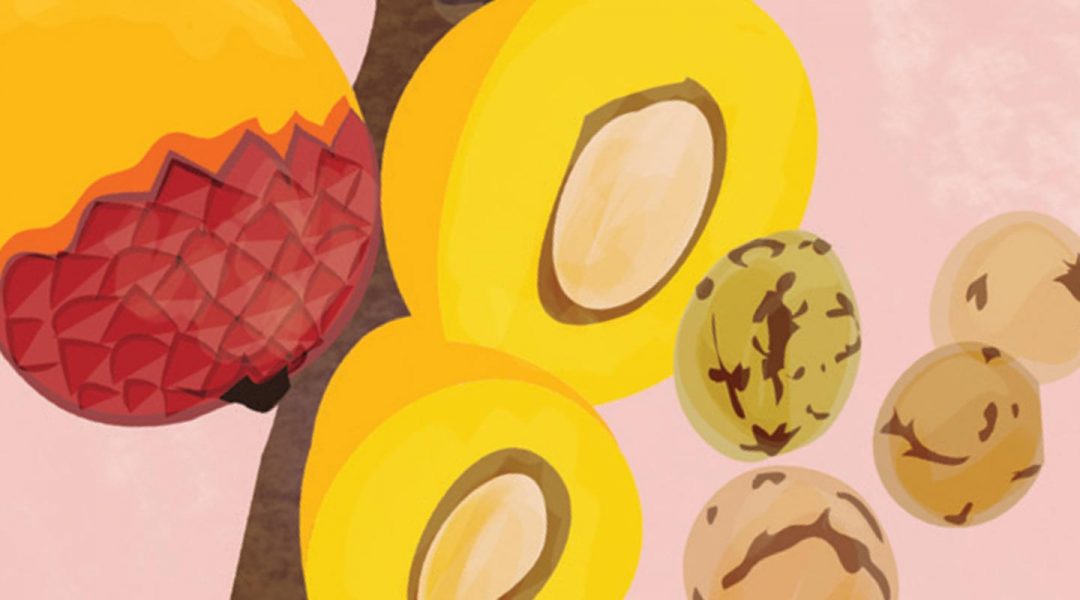
Those who walk together
Text by Oreme Ikpeng
FenoFasicus, drawings by Dedê Paiva
The Xingu community began to notice changes in nature’s signs – in the climate, in the rain cycle, in the decrease of humidity, in the prolonged flows and the color of the water. It was time to act on problem-solving, especially reforestation. The Yarang Women and the Xingu Seed Network got together and are now part of an economy based on the standing forest.
All the yarang ants walk together; they seek leaves, seeds, and twigs, carry everything on their heads, take it home and enjoy it. That is what these ants do, leaf cutter ants, known in Portuguese as saúvas; and so do the Yarang Women who compose the Xingu Seed Network. The name of this group of women, the Yarang Women, was elected among other possibilities, such as rere and kurigre – rere are bats and kurigre are squirrels in the Ikpeng language.
The Yarang Women Movement started in 2009. They were 15 gatherers, mostly older women. That year, they gathered 500 kilograms of over 40 seed species. Back then they were still not very organized, but now they gather over 3 tons of forest seeds every year, and have planted over 1 million trees.
Currently, there are 74 Yarang gatherers that deliver the seeds, but a lot more people contribute; the whole community participates – husbands, daughters and sons. The seeds collected are meant for reforestation; they are not used for cosmetics or food. We also sell seeds for handicrafts and cosmetics companies, but we follow all protocols so that certain Indigenous seeds are only used for reforestation.
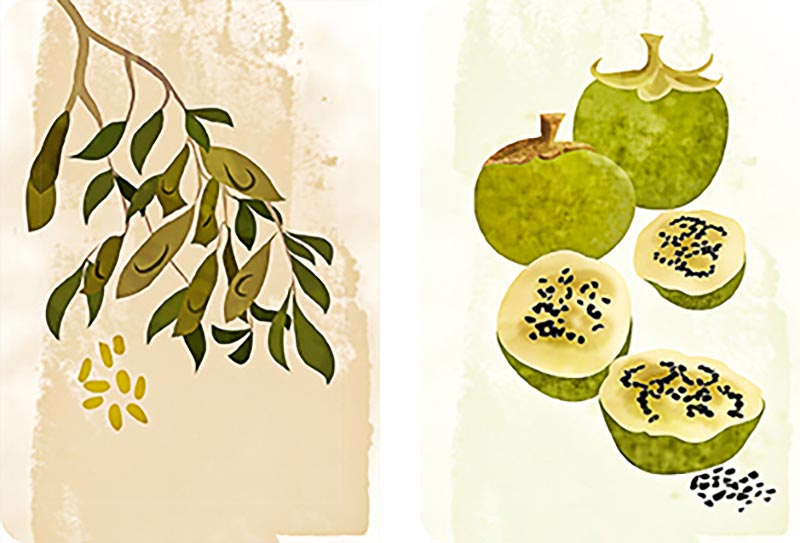
In the villages we talk about the reproduction, the quality, and the logistics of seeds. Lately, the Xingu Seed Network was awarded the Ashden Awards for climate solutions. We have been recognized internationally as the most extensive seed network in Brazil. We are helping other networks, such as the Rio Doce Seed Network, in the North of the state of Minas Gerais.
The Xingu Seeds Network has crossed borders and today goes from the Xingu Basin to the Araguaia Basin and meets demands in the state of Goiás. Currently we have more than 500 seed collectors: urban collectors, non-Indigenous people who live in the city, collectors from small family farms, collectors from settlements and Indigenous collectors. About 60% of gatherers are women. Our customers and partners are mainly companies and people working with dams and cattle ranchers, who buy the seeds to reforest large areas.
The same people who deforested are now buying seeds to reforest – and they are paying the gatherers. The Yarang Women claim that working with seeds is not only about the money – if they were thinking about making money, they would not gather, as the work is not paid monthly, but annually. The Yarang Women and the Xingu Seed Network integrate an economy that relies on the standing forest.
Most Yarang Women do not speak Portuguese, so I speak for them, with their permission. I listen to the women as a son, a nephew, a son-in-law. I am not their boss; they are my bosses. My work only exists because their work exists. I am just a voice, but I believe that an Ikpeng woman will be in my place in the near future. Today I am the one who makes the connections, who translates everything into Portuguese. In mathematics, the Ikpeng count one, which is nane; two, which is arak; and then, for three, we say arak-ewari-wïngpe, “a double and a single”. Four is arakne, “two pair”; five would be arakne-nane-ewari-wïngpe, “two pair and one with no pair.” When numbers go beyond ten, they are itïng, a lot. When I ask about the price of seeds, they say: “These ones are yawuga“. Yawuga is the golden lion tamarin, which is stamped on the banknote that corresponds to R$ 20. If the seeds are yawuga, they are worth R$ 20.(1) If they are equivalent to a jaguar, the value is R$ 50. The collectors don’t say “50 reais”; they say akari, which is a jaguar, or yawuga, which means gold lion tamarin.
Despite the fact that they didn’t go to school and don’t speak Portuguese, the Ikpeng women are sage: they don’t need a calendar or to take notes. The idea that you must study to become somebody is a biased one. Nobody needs to study to be somebody. One needs to study to qualify, but saying we need to study to be someone is like stating we’re currently nothing. Within Western knowledge, most schools and universities train market competitors, when they should be spaces that develop citizens capable of integrating a harmonious society – not consumers or market competitors. The success of this project is due to the fact that the women bear other things in mind, and not just money. They also take other results into account. They consider the importance of what they do, not only for the Xingu and its people. They appreciate the experience, the joy of the meetings, and the conviviality present in things made collectively.
There are several types of seeds: seeds that must be harvested by climbing and seeds that are picked from the ground; seeds that are picked clean and only need to pass through a sieve; seeds that one needs to break, in order to remove the pulp, and leave to dry. The goat’s eye seed(2) is an example of a seed that only needs to be collected and passed through a sieve. All this knowledge is not taught in schools; the Seeds Network had no reference on how to research about the gathering, management, and processing of seeds, as seed collection was a new thing. We learned from the experiences of the Yarang Women. They are scientists who discover and adapt things. If a seed has a weevil, then we have to respect that weevil, because he owns it, instead of poisoning it. The Whites may consider him a plague, but for us he is the master spirit. Because all life is life, and everything has an owner. People are born, live, age, and die. Trees are also born, bear fruits, grow old and die. It is such science that the gatherers respect.
Animals contribute, too. The greatest planter, for example, is the agouti. The agouti takes a seed, buries it, takes another, buries it. They go on burying, burying, burying, and then they go back and pick the seeds up. But as they bury many seeds, they don’t remember all of them, and the seeds end up germinating and turning into more trees. When we reforest, we must provide conditions for life to thrive; we need to plant seeds that will attract birds, bats, ants, so that they can do their part. The forest is dynamic. Whatever is weak dies, whatever is strong grows; and whatever dies becomes fertilizer for something else.
We have seeds from pioneer trees, which grow and die quickly; we have secondary trees, which last longer, but that also go away; and then we have the climax, centenary giant trees. For a reforestation area to become a forest, it takes between twenty and thirty years. In ten years, one can already notice the difference; in fifteen years, one will see that the soil has improved and that trees are taller. But to really see a forest, it takes thirty years. After that period of time we can say we have reforested a piece of land. First, the birds will come, then the bats and the insects, and then the rodents and the monkeys, according to their dynamics.
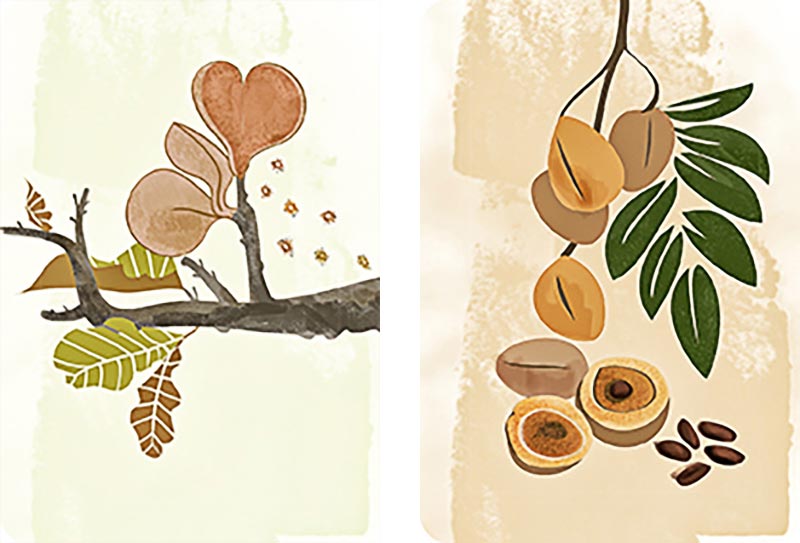
While non-Indigenous people need a calendar to mark the harvest, nature speaks to us; it gives us signs. It is talking all the time, but only to those who are prepared to listen. When people ask me what it is like to be prepared to listen to the voice of nature, I answer: “If you wait for nature to say good morning or good night, you will never hear it”. But the flowering of the Tabebuia indicates the arrival of rain, which for us means it is time to burn the fields; and yellow butterflies are a sign that the rain has come to an end and that it will soon dry up.
It was in 2002 that our leaders, the caciques, and the Xingu community began to notice changes in nature’s signs – in the climate, in the rain cycle, in the decrease of humidity, in the prolonged flows and the new beaches that appeared by the river, in the color of the water, which went from clear to cloudy. Before, there were six months of rain and six months of drought, but now there are eight months of drought and four months of rain. The entire community also noticed the emergence of diseases that had not been among us before.
In order to debate these issues, the 1st Xingu Springs Conference(3) was held that same year in the city of Canarana, in the state of Mato Grosso. Members of the State government, universities, government agencies such as the National Water Agency (ANA), the Ministry of Agriculture, the municipalities around the Xingu area and NGOs such as the Instituto Socioambiental (ISA) were present. The headwaters and river springs are outside the Xingu Indigenous Territory, but everything that happens outside affects us. The changes began to occur as products and commodities in Mato Grosso went through a modernization process. Mato Grosso was becoming the largest producer of grains and, at the same time, the largest deforester in Brazil. So, the main proposal was to think of possible solutions to rebuild the forest.
In 2007, the Xingu Seed Network was created. It was time for initiatives to act on problem-solving, and the biggest one was reforestation. The Xingu Seeds Network was presented on the occasion of the 2nd Xingu Springs Conference and the 1st Social and Environmental Initiatives Fair(4) in 2008. We launched the Y Ikatu Xingu campaign, which in the Kamaiurá language means “Save the good water of the Xingu”, intending to reforest the headwaters and river springs, especially along the Xingu River. Where would we get the seeds, if Mato Grosso was being deforested? If it was becoming both the biggest producer of grains and the biggest producer of pesticides? The Indigenous people themselves then began to gather seeds for the reforestation campaign.
In addition to reforestation, gathering seeds also provided income when the seeds were sold, which began to be necessary. Before, Xingu communities didn’t need money because Western things were far away. Now, we need it. But how can we make money sustainably? It was a very innovative initiative, but initially even ourselves would have doubts: who would buy the seeds? Who would want to reforest, if it was much more profitable to cut down the trees and plant soy?
Many ignorant landowners think that reforestation is silly, that climate change does not exist; but some accept it as a market demand: “I am producing food, so I have to accept the market’s demands”. As seedlings were very expensive, the idea of reforesting with muvuca was born. We adapted the tools previously used for agricultural planting and thus reduced costs. Muvuca is a carioca(5) slang that means mess or crowd, and muvuca, for us at the Xingu Seeds Network, is a mixture of several seeds in the sand used for reforestation.

The Xingu Indigenous Territory, also called the Xingu Indigenous Land or Xingu National Park, comprises sixteen indigenous peoples, each with their own language, culture, traditions, and religions. Currently, we call it the Xingu Indigenous Territory because there are several lands within the Xingu: the Naruvôtu Indigenous Land, the Batovi Indigenous Land, the Wawi Indigenous Land, the Capoto Jarina Indigenous Land… There are 120 villages, with more than eight thousand Xingu people. The Xingu was created in 1961. It was the first indigenous land demarcated in Brazil, covering 2.8 million hectares. When they talk about the Xingu, people are usually referring to what we know as the Upper Xingu region, which is better known. However, the Xingu is divided into four regions: the Upper Xingu, the Lower Xingu, the East Xingu and the Middle Xingu. I’m from the Middle Xingu. The Upper Xingu is more open and accessible, and more non-Indigenous people can be found in that region. The other regions are more isolated, and many people do not know them.
The Villas-Boas brothers(6) first contacted the upper Xingu people, who were more receptive and did not offer much resistance, unlike the Xavante people, with whom it was difficult to make contact, and us. Orlando Villas-Boas received financial support and equipment from non-Indigenous people who wanted to visit the Xingu, and the Upper Xingu people were the ones who welcomed such visitors. In the Upper Xingu it was easier to open up roads and there was already an airstrip. Also, the Quarup ritual(7) became very well-known, attracting more visitors and becoming a financial source – currently people who visit the Upper Xingu pay to do so, generating income for the region. The Upper Xingu thus became a place with greater access, a community with fewer restrictions. On the other hand, in order to enter the other Xingu regions, approval was required. The community has to previously accept the entrance of visitors. Funai(8) also used to monitor the access. It was difficult and, in fact, it still is difficult to enter the Middle, East or Lower Xingu areas.
The Kawaiweté,(9) the Kaiabi and the Yudjá peoples settled in the Lower Xingu, the Ikpeng and the Trumai peoples in the Middle Xingu, where we still are, and the Kisêdjê Suyá people in the East Xingu – all places that had no easy access. When we first arrived in the Xingu region, the Upper Xingu people already lived there. We were the people who came later, the Ikpeng, the Kaiabi, the Juruna, the Tapaiuna and the Panará peoples, the latter of whom managed to return to their homeland. We, the Ikpeng, were enemies of the Upper Xingu people; we usually attacked their villages. At the same time, the Villas-Boas brothers realized that the Ikpeng and other ethnic groups, such as the Kaiabi, easily absorbed things; they learned quickly. And just as they could learn good things, they could learn bad things, too. So, we were isolated in a specific location, which did not allow visitors.
The first contact of the Ikpeng people was on October 18th, 1964, at ten o’clock in the morning. A plane flew over the village and filmed the contact. It wasn’t just Brazilians who were on the plane. The Belgians sponsored the contact with the Ikpeng people. The King of Belgium, Leopold III, visited the Xingu and participated with the Villas-Boas brothers in contacting some ethnic groups, including the Ikpeng. We lived on the edges of what is now the Xingu National Park, outside its boundaries, on the Jatobá River, a tributary of the Xingu River. We call our land Roro-Walu, or “Parrot River”. As the Xingu had been demarcated as an Indigenous land, the territories around it had already been subdivided and auctioned off to large landowners. Thus, the government of the state of Mato Grosso, at that time under the military dictatorship, gave a warning to the Villas-Boas brothers: they were to make contact with the Ikpeng and take us to the Xingu Park. The Belgians entered the scene because the Villas-Boas brothers needed resources in order to make contact; they provided the aircraft and the funds to purchase things to be offered to us. The condition was that a Belgian filmmaker would film the contact.
The Villas-Boas brothers knew that the Ikpeng were a nomadic people, warriors, who would not give in easily, who would shoot arrows, but they were not intimidated. The very name Ikpeng means “flock”, or “angry wasps”, or “those who walk together”. The Ikpeng were like wasps that attack together and come after the enemy; if you find a nest and mess with them, they’ll go after you wherever you go! Before contact, we used to invade other villages to intimidate other peoples, so they would not approach our territory. Orlando Villas Boas feared the Belgians would be hurt by arrows.
The Ikpeng people, also known as Txicão, a name given by the sertanistas,(10) were described by the French anthropologist Patrick Menget as “a people who have a strong and provocative speech, and which to many may seem arrogant, […] a people who recognize war as a means of reproduction of social life”. The Ikpeng, however, relented. The plane landed carrying axes, hats, shirts, and the Ikpeng eventually gave way. After three years, we were transferred to the Xingu. It was November 1967.
We left our sacred places, rituals, graves and agriculture behind, and settled in the Xingu. At the beginning of the contact, we were about 60 individuals. We got sick, with diseases we didn’t know about, brought by non-Indigenous people; those were diseases that our medicine couldn’t cure because they were European diseases. Our historical enemies were in the Xingu Park, and at first they did not accept the idea of us moving in. Now, more than 30 years later, there are marriages between our different ethnicities; we respect each other, we are friendly. Initially we had conflicts, and it was challenging to live together; it was new for everyone. Orlando Villas-Boas had to work hard to make us get along. We settled in the Middle Xingu, where our population increased. Today we are more than 500 Ikpeng individuals, speakers of the Ikpeng language, which comes from the Karib linguistic branch. We respect the partnership we established with our neighbors; we live in a community, and already say that we are “Xinguanos”.(11)
We, the Ikpeng, started interacting with the outside world in 2012. Currently, we have many visitors; our territory is more accessible, and there are new roads to the Middle Xingu and the municipalities that are close by. The fame of Xinguanos is considerable; there are always groups of people who want to get to know us. Even though it is not easy, it is not as hard as it used to be. People say that travelling to Europe is cheaper than coming to the Xingu because of logistics and infrastructure, as there are no means of transportation such as buses or cars. Individuals have to be hired to do the work, so it is expensive to come to the Xingu.
After 57 years of contact, we now fight to regain our original territory. We have a case in court asking for the demarcation of our land, which is currently being used as pasture; it has become a place filled with soy, corn, lumbering, and no forest. About 90% of the forest was destroyed, and we will have to design a reforestation project in order to recover the territory, so that it goes back to being what it used to be. An anthropological study has already been produced, as well as a map that draws the limits of the territory and a report that points that the land should be legally recognized as an Indigenous territory. When the farmers were informed that we wanted our land back, threats and intimidation began to take place. The 1st Federal Court of Brasília voted for the demarcation of the land, and the farmers don’t want us anywhere near it anymore. Now, our fight is taking place in the judiciary, in Brazil’s capital.
The Ikpeng never thought it would be necessary to replant the forest one day. We looked at the infinite forest and thought, “This will never end, we are the forest, and the forest is us. If the forest ends, we end”. Gathering seeds is, in this sense, a mission. Our mission is reforestation.
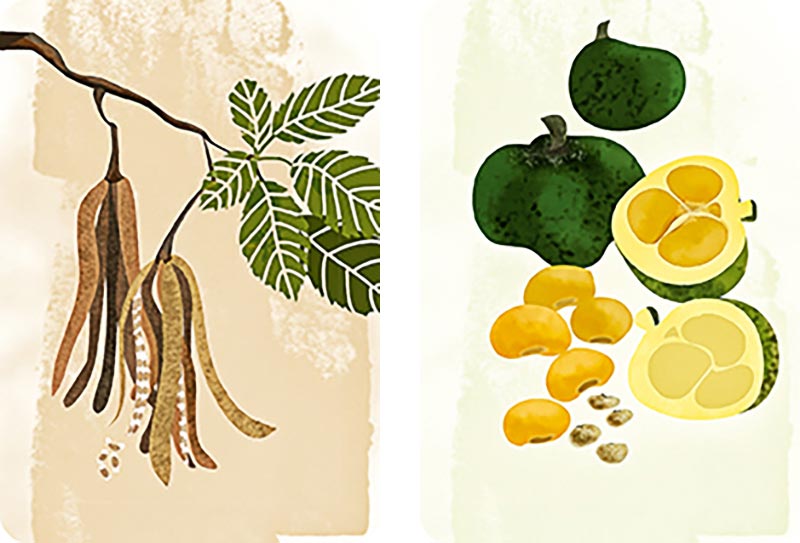
In 2018, we went on an expedition to the areas being reforested. A representative of the Yarang Women Movement was there. She was really happy to see that their seeds were being planted and were becoming a forest! We visited different areas, some of which were at the beginning of the process, some of which were already 20 years in. We could see the difference. In the latter we found birds, hornets, armadillos… so, we could really see that the place was going back to normal.
Gathering seeds for our villages is something that we already did, even when we didn’t have a demarcated territory and could migrate anywhere. Reforestation from scratch, however, is something new, which came with the help of external science. I studied Agroecology in order to gain knowledge in this area. Gathering seeds and planting them has always been something natural. The Ikpeng women did that without realizing it. But reforestation is something new for everyone, as we had forests standing not so long ago, and now we need to replant them. We currently live in a demarcated land, and we know that we must preserve that land in order to survive. If it ends, we are done. We need to take care of this land. Staying in the same area for 30 or 40 years is not common in our Indigenous culture. We would stay for 5 or 6 years and then move on and come back years later. The forest would had recovered when we came back. Now it is different. We are obligated to live in the same place, so we need to re-manage our territory.
Under present Dilma’s government in 2012, Brazil committed to reforesting 12 million hectares of land until 2030. We did some research and found out that we would need something like 200 Xingu Seed Networks to achieve that. We do not limit ourselves; we do not see other networks as competitors, but as partners. We support other seed networks.
Before, we were prejudicial against every white people – be them linked to large farms, be them small rural producers. They were all considered enemies. Through our exchange networks we realized that some whites are also being excluded from society. Small rural producers, for example, do not have support from the government, which only supports large scale producers. That brought us closer; we got to know them, and they got to know us, and we connected. Now we understand that our struggle is common and that the political system is our enemy. We have cultural exchanges with actors who used to think differently but now form a community in which there is great diversity. Not all white people intend to deforest and expel.
The Xingu is an island of forest in a sea of soy monoculture, where it rains pesticides. The state of Mato Grosso is the largest grain producer in Brazil, and also the largest consumer of pesticides. We need to value the organic work of small rural producers, because it shows that it is possible to live in a standing forest. New models for the economy are possible. We must leave this colonial state of mind that we never really abandoned in Brazil. We continue to follow an European logic, according to which we need to produce in order to get rich. Insects are part of nature like we are; they are not pests that we need to fight. I am not against agriculture, but against how it is done, against the inequality it causes. In Brazil, no one should be hungry. The need to extract resources in order to develop is a backward and destructive idea. We must find our own autonomy, understanding that this is our heritage. We must change our habits and consumerism, understanding that water is not an inexhaustible resource and that one day there will be no water. Our most significant wealth is the standing forest.
–
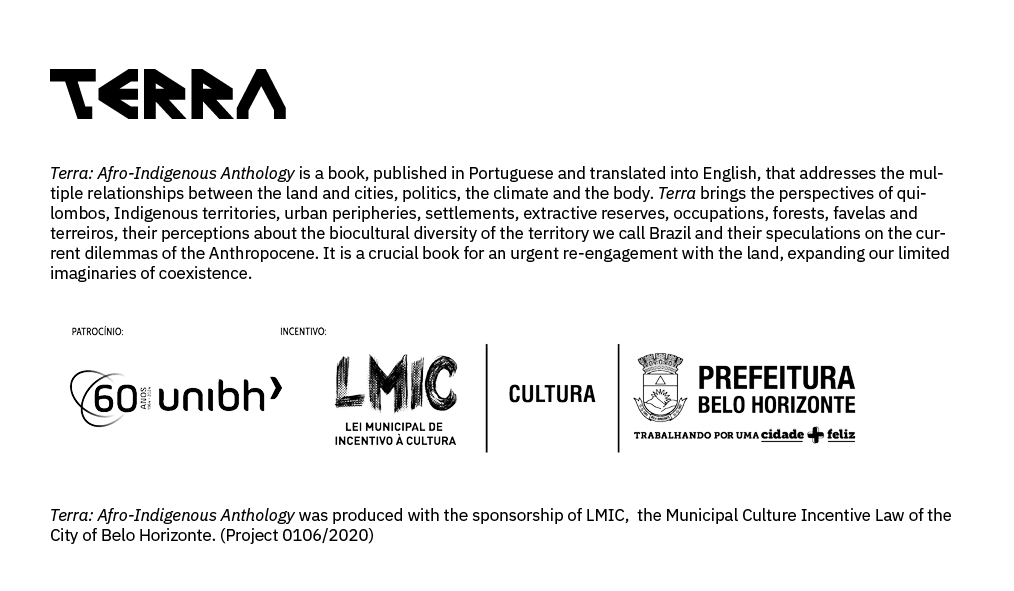
Oreme Ikpeng is an environmental activist and Agroecology Technician, one of the coordinators of the Yarang Women’s Movement, an articulator for the Ikpeng people, and a councilor for the Xingu Seed Network.
Dedê Paiva is an artist graduated from UFMA, illustrator and designer of cultural, educational and human rights projects.
This essay was originally published in Portuguese in the book Terra: antogia afro-indígena (PISEAGRAMA + UBU, 2023) and translated into English by Brena O’Dwyer.
How to quote
IKPENG, Oreme. Those who walk together. PISEAGRAMA Magazine. Online version, Read in English Section. Belo Horizonte, December 2023.
Notes
1 The Brazilian currency is the Real. Each bill has an endangered animal on it. The R$1 bill has a hummingbird; the R$2 bill a sea turtle, and so forth. The R$ 20 bill bears the image of a gold lion tamarin and the R$ 50 bill, the image of a jaguar.
2 Goat’s eye seed is the name given to the seeds from the Ormosia arbórea tree in Brazilian Portuguese.
3 In Portuguese: 1º Encontro Nascentes do Xingu.
4 In Portuguese: 1ª Feira de Iniciativas Socioambientais.
5 Carioca: that which relates to the city of Rio de Janeiro.
6 Orlando (1914-2002), Cláudio (1916-1998) and Leonardo Villas-Boas (1918-1961) were Brazilian activists who worked for the protection of Indigenous people. There were important for the creation of the Xingu National Park and the demarcation of that Indigenous territory.
7 A ritual that celebrates the dead held by the Indigenous peoples in the Upper Xingu area.
8 In Portuguese: Fundação Nacional do Índio. The National Indian Foundation was founded in 1967 and is a Brazilian governmental protection agency for Indigenous interests and their culture.
9 This paragraph cites different Indigenous groups that live in the Xingu region.
10 Sertanistas was the name given to the pioneer explorers, usually of European descent, of the Sertão region, one of the four sub-regions of the Northeast of Brazil.
11 Xinguano refers to someone who was born or lives in the Xingu National Park.